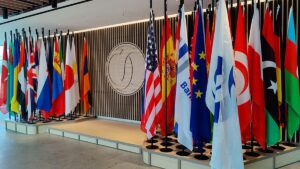
The European Bank for Reconstruction and Development (EBRD) is providing OTP Leasing with an unsecured loan in local currency equivalent to up to EUR 20 million to support micro, small and medium-sized enterprises (MSMEs) affected by the Russian Federation’s war against Ukraine.
“The financing will help strengthen the competitiveness, resilience, and inclusiveness of Ukrainian MSMEs by expanding access to leasing products in conditions of liquidity shortages and heightened economic uncertainty,” the bank said in a statement on Wednesday following the signing of the necessary documents.
It is noted that 50% of the loan funds are planned to be directed to MSMEs for long-term investments in technologies that meet European Union (EU) standards, in particular “green” technologies, and the financing should enable enterprises to obtain transport, equipment, and machinery without significant initial capital expenditures at a time when liquidity remains limited due to war factors.
Upon completion of the investment projects, borrowers who meet the program criteria will receive EU-funded technical assistance and US-funded investment incentives under the EU4Business initiative.
Additional grants are available for businesses that have suffered destruction, loss of assets, or forced displacement, as well as for companies that promote the reintegration of veterans, persons with disabilities, and IDPs, and for MSMEs that have relocated or operate in affected regions, with support also extending to businesses led by women and young people.
The loan will be supported by an interest rate subsidy of up to 10% from the US through the EBRD’s SME Special Fund.
According to the EBRD, the company is its current client and a leading leasing company in Ukraine, providing financial leasing and fleet management services to corporate clients and MSMEs throughout the country.
Since the start of Russia’s full-scale war against Ukraine, the EBRD has raised more than EUR 9.1 billion for Ukraine, including EUR 3.3 billion through partner financial institutions.
OTP Leasing is a non-bank financial institution subsidiary of Hungary’s OTP Bank, which has been working with the EBRD for many years.
In the third quarter of 2025, the company’s revenue increased by 7.3% compared to the third quarter of 2024, to UAH 1 billion 242.3 million, while net profit almost doubled, to UAH 808.0 million.
EBRD, FINANCING, LOAN, OTP LEASING, SMES
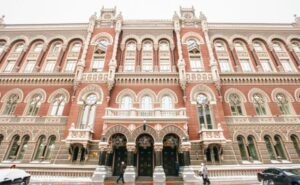
In December 2025, the state-owned Oschadbank was fined UAH 5.5 million by the National Bank of Ukraine for violating financial monitoring legislation.
As noted by the regulator, the violations identified concerned the application of a risk-based approach and proper customer verification in the area of AML/CFT. In addition, the NBU issued a written warning to the bank.
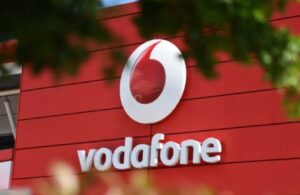
Vodafone Ukraine (VFU), Ukraine’s second-largest mobile operator, which repurchased its own Eurobonds worth approximately $18.9 million at the end of May following several offers in connection with the payment of dividends, has announced another similar tender at a price of 98% of the nominal value for a total amount of $1.475 million.
As noted in a statement on the Irish Stock Exchange on Wednesday, on January 2, the company made another monthly dividend payment of UAH 49.315 million, which is equivalent to the monthly ceiling of EUR 1 million set by the National Bank.
Applications for participation in the tender will be accepted until January 21 inclusive, and settlements are planned for January 28.
Bonds maturing in February 2027 with a nominal rate of 9.625% per annum were issued for $300 million. Their redemption is related to the fact that on April 24, 2025, VFU announced the accrual of dividends to its shareholder in the amount of UAH 660.245 million ($15.9 million at the exchange rate specified in the announcement) for 2024. According to the restrictions of the National Bank, they will be paid in separate monthly payments. Each such monthly dividend is expected to amount to UAH 1 million. The company emphasized that under the terms of the bond issue, in this case, it must offer all bondholders to submit an application for their sale for an amount equal to the amount of dividends paid outside Ukraine.
In the first two tenders, mobile operator Vodafone Ukraine repurchased bonds for an amount equivalent to EUR 1 million. The debut repurchase was announced at a price of 99% of the nominal value, the second at 90% of the nominal value. The company did not announce the results of the second buyback on the stock exchange, while the scaling factor for the first buyback was 0.0040355668.
Following the results of the third tender, where the redemption price was reduced to 85% of the nominal value and the offer was limited to $4.67 million, Vodafone Ukraine received bids for $53.395 million and satisfied them in the amount of $5.208 million. The scaling factor was 0.1315451889487317.
The fourth tender was announced on August 13, but was then extended seven times. As a result, the redemption price was increased from 85% to 98%, and the redemption amount to $10.84 million. The company received bids for $127.14 million for this amount. Some of the bonds were returned to their owners due to the impossibility of splitting the nominal value, and the rest were accepted with a scaling factor of 0.1150681.
Finally, at the fifth bond redemption tender in December, where the price was again 98%, Vodafone Ukraine received high demand, which exceeded the offer of $1 million 164.7 thousand by more than 50 times. The scaling factor was set at 0.01901.
In total, according to the results of five tenders, the total nominal value of bonds remaining in circulation is $280 million 614.93 thousand.
As reported, mobile operator VFU increased its net profit by 10.7% to UAH 3 billion 446.80 million and its revenue by 13.3% to UAH 19.03 billion in the first nine months of this year.
The report noted that in order to service and redeem Eurobonds, the company received loans from related parties in 2025. In February, the parent company Telco Investments B.V. provided $49.59 million for partial repayment of the Eurobond debt. In June, an agreement was signed with Telco Investments for a dollar credit line in the amount equivalent to UAH 660 million, at 10% per annum, maturing in 2028.
Finally, in July 2025, a loan agreement was signed with the Dutch company Cemin B.V. for $10 million at 10% per annum, with a repayment date no later than the end of 2027, but not earlier than the maturity of the Eurobonds. The funds are credited in tranches to the company’s bank account in a foreign bank and are to be used to redeem bonds, which Vodafone Ukraine is doing in connection with the resumption of dividend payments this year.
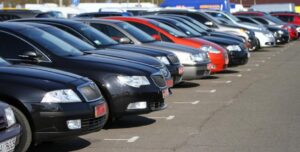
Initial registrations of used passenger cars imported from abroad in 2025 increased by 22% compared to 2024, reaching 278,630 units, according to the Automotive Market Research Institute.
The annual import rating is headed by the unchanged leader — Volkswagen (37,200 cars), which, according to experts, offers everything from budget options to premium crossovers, as well as buses and vans.
“Audi (25,900) ranks second, which indicates Ukrainians’ high demand for comfort and status,” the Institute’s website says.
At the same time, it is noted that the main event of the year was Tesla’s entry into the top three with 24,140 cars registered.
“The purely electric brand surpassed many traditional competitors, becoming a symbol of the ‘green’ craze of 2025,” the report states.
The top five are rounded out by Nissan (21,600) and Renault (almost 17,000), which maintain their positions thanks to a combination of popular electric cars and practical diesel cars from Europe.
Next in the top ten brands are BMW, Hyundai, Ford, KIA, and Skoda.
Experts note that Volkswagen Golf retained its leadership in the model ranking (10,670), but its lead over its competitors is minimal (and not without the help of e-Golf).
The main competitor is the Tesla Model Y (10,550), and third place goes to the Tesla Model (9,200). Fourth in the ranking is the Skoda Octavia (7,700), and fifth is the Nissan Leaf (7,500).
“As for premium models, last year the Ukrainian car fleet was replenished with Porsche (1,265 units), Maserati (97), Lamborghini (21), Rolls-Royce (17), and the same number of Bentley, Ferrari (8), Aston Martin (6), and one McLaren,” the report says.
Experts report that in December last year, 41,700 used imported foreign cars were submitted for first registration, which is almost 2.7 times more than in December 2024 and 75.3% more than in November 2025.
The report notes that since the beginning of 2025, import volumes have gradually increased: from 14,500 cars in January to almost 42,000 in December.
“The last time such volumes of ”freshly imported“ cars were seen was in 2022, during the temporary ”zero customs clearance” period. Now, this activity has been caused by the ‘race for electric cars’, as VAT on their import was introduced on January 1,” experts note, stating that this is why Tesla is among the top three leaders.
“Overall, we have seen a 22% increase in imports over the year, but it should be understood that a significant portion of these cars were purchased ‘in advance’. We have actually taken a portion of sales in 2026, so now the warehouses are full, and there will be no such rush in the coming months,” Stanislav Buchatsky, head of the Automotive Market Research Institute, is quoted as saying in the report.
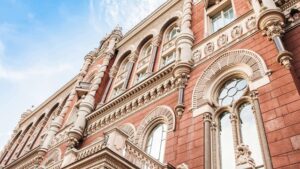
The National Bank of Ukraine fined TAScombank UAH 10.0 million for violating anti-money laundering and counter-terrorist financing (AML/CTF) requirements.
In particular, the violations concerned the application of a risk-based approach and inadequate customer verification. The NBU also issued written warnings to the bank for late notification of threshold financial transactions and submission of incorrect information on foreign exchange transactions.

As we know, personnel are everything. This is not just an empty phrase, because in science, where training sometimes takes decades, the future of a country is determined by the availability of qualified researchers.
After the collapse of the USSR, where scientists occupied an honorable place in the hierarchy of professions, Ukraine acquired one of the largest research systems in Europe. The scientific school of the Ukrainian SSR era was known for its advanced technologies and groundbreaking ideas. Subsequently, in the early years of independence, changes in the structure of the economy began. While in 1991-1995 the share of industry in GDP exceeded 40%, by 2024 it had fallen to 19.0%, and the service sector had taken the lead, growing from 40% to over 70%.
The country’s economic problems and economic transformation also led to a reduction in funding for science. The dynamics of this reduction are shown below:
Table 1. Dynamics of expenditure on research and development in 2010-2023.
|
Years |
Research and development expenses – total, million UAH | Share of research and development expenditure in GDP, % |
| 2010 | 8107,1 | 0,75 |
| 2011 | 8513,4 | 0,65 |
| 2012 | 9419,9 | 0,67 |
| 2013 | 10248,5 | 0,70 |
| 2014 | 9487,5 | 0,60 |
| 2015 | 11003,6 | 0,55 |
| 2016 | 11530,7 | 0,48 |
| 2017 | 13379,3 | 0,45 |
| 2018 | 16773,7 | 0,47 |
| 2019 | 17254,6 | 0,43 |
| 2020 | 17022,4 | 0,41 |
| 2021 | 20973,8 | 0,38 |
| 2022 | 17117,8 | 0,33 |
| 2023 | 21348,1 | 0,33 |
The share of science spending in gross domestic product (GDP) has been steadily declining since 2010 and has fallen to 0.33% in recent years. Back in 2017, the World Bank noted that “…the current innovation policy and corresponding state funding do not meet the critical needs of the Ukrainian national innovation system.” A significant reduction in funding has led to the disappearance of a number of scientific institutions (SIs) and a decline in the prestige of scientific work. Young people are not going into science because of low salaries and the low status of scientists. It cannot be otherwise, given that the salary of a senior researcher at the National Academy of Sciences of Ukraine is 13,034 hryvnia.
All this has led to increased migration, a decrease in the number of scientists, and a loss of opportunities to reproduce human resources. The number of personnel in the field of research and development (R&D) has decreased sevenfold: from more than 400,000 people in 1991 to 63,800 in 2024. Below you can see the dynamics of the number of personnel engaged in R&D.
Fig. 1. Dynamics of the number of personnel employed in R&D in Ukraine

Table 2. Dynamics of the number of personnel employed in R&D in Ukraine
| Years | Number of employees involved in scientific research and development – total, persons | Including | ||
| researchers | technicians | support employees | ||
| person / as a percentage of the total number of employees involved in scientific research and development | person / as a percentage of the total number of employees involved in scientific research and development | person / as a percentage of the total number of employees involved in scientific research and development | ||
| 2010 | 182484 | 133744 / 73.3 | 20113 / 11.0 | 28627 / 15.7 |
| 2011 | 175330 | 130403 / 74.4 | 17260 / 9.8 | 27667 / 15.8 |
| 2012 | 164340 | 122106 / 74.3 | 15509 / 9.4 | 26725 / 16.3 |
| 2013 | 155386 | 115806 / 74.5 | 14209 / 9.2 | 25371 / 16.3 |
| 2014* | 136123 | 101440 / 74.5 | 12299 / 9.0 | 22384 / 16.5 |
| 2015 | 122504 | 90249 / 73.7 | 11178 / 9.1 | 21077 / 17.2 |
| 2016 | 97912 | 63694 / 65.1 | 10000 / 10.2 | 24218 / 24.7 |
| 2017 | 94274 | 59392 / 63.0 | 9144 / 9.7 | 25738 / 27.3 |
| 2018 | 88128 | 57630 / 65.4 | 8553 / 9.7 | 21945 / 24.9 |
| 2019 | 79262 | 51121 / 64.5 | 7470 / 9.4 | 20671 / 26.1 |
| 2020 | 78860 | 51427 / 65.2 | 7117 / 9.0 | 20316 / 25.8 |
| 2021 | 68808 | 44321 / 64.7 | 5879 / 8.6 | 18288 / 26.7 |
| 2022* | 53221 | 36084 / 67.8 | 5020 / 9.4 | 12117 / 22.8 |
| 2023 | 58567 | 38845 / 66.3 | 4542 / 7.8 | 15180 / 25.9 |
| 2024 | 63847 | 42670 / 66.8 | 5148 / 8.1 | 16029 / 25.1 |
The period of sharp decline in the number of R&D personnel (1991-1999) was characterized by a drop in funding. Subsequently, in 2000-2008, the number of research personnel stabilized at 200,000. The financial crisis accelerated negative trends in the dynamics of R&D personnel. This was followed by the annexation of Crimea and parts of the eastern regions, and the war. In 2024, the UNESCO report “Analysis of war damage to the Ukrainian science sector and its consequences” noted that as a result of the Russian Federation’s aggression, 12% of scientists were forced to emigrate or move within the country. Of these, 6.3% were forced to emigrate to other countries, and 5.5% became internally displaced persons. About 30% of all scientists began to work remotely. In other words, there was a “brain drain” from science. According to some data, more than 20,000 R&D workers were temporarily displaced or left Ukraine in 2022. Thus, losses associated with the war were added to the traditional outflow of scientific personnel. Changes in the structure of science have also led to the disappearance of the previously massive category of designers and technologists. Ukraine’s recovery will take place through investment projects that will require a huge amount of design and technological documentation, which no one is left to prepare.
Table 3 shows that, in addition to the decline in the number of scientists, there is also an aging of science. The most numerous age group in science is scientists over 65 years of age. Scientists aged 55 and older make up about 40% of scientists.
Table 3 Number of researchers involved in R&D by age:
| up to and including 25 years of age | 25-29 years | 30-34 years | 35-39 years | 40-44 years | 45-49 years | 50-54 years | 55-59 years | 60-64 years | 65 years old and older | |
| 2016 | 1876 | 6418 | 7863 | 7488 | 6216 | 4936 | 5816 | 6593 | 6328 | 10160 |
| 2020 | 949 | 3165 | 5418 | 6239 | 5714 | 4927 | 4123 | 4957 | 5191 | 10744 |
| 2016 | 2.9% | 10.1% | 12.3% | 11.8% | 9.8% | 7.7% | 9.1% | 10.4% | 9.9% | 16.0% |
| 2020 | 1.8% | 6.2% | 10.5% | 12.1% | 11.1% | 9.6% | 8.0% | 9.6% | 10.1% | 20.9% |
The situation with personnel in science is such that it can be described in the words of Ernest Hemingway: “Ask not for whom the bell tolls, for it tolls for thee.” And without personnel, there will be no science.
In the structure of science funding, the largest share is concentrated in the business sector – 59.9%, in the public sector it is 33.4%, and in the higher education sector – about 6.7% of expenditures. In terms of personnel, the public sector accounts for 49%, the business sector for 34.6%, and higher education for 16.4%. Scientific institutions and universities are predominantly state-owned. Research in universities is not a key activity and is largely separate from teaching.
The main channels of public funding are the Ministry of Education and Science, sectoral academies, and the National Research Fund of Ukraine. Another source is the foreign sector. In the pre-war period, foreign sources accounted for 20-25% of R&D funding in Ukraine. In the context of the war, foreign partners have stepped up grant funding.
For many years, Ukrainian science has been unsuccessfully trying to establish links with business due to the lack of a comprehensive policy aimed at supporting such cooperation. However, these efforts are often fragmented, short-term, and insufficiently integrated into national innovation and industrial strategies. The lack of coordination between universities, business, and government agencies hinders the development of an innovation system.
Another feature of Ukrainian science is the almost complete absence of funding from regional sources, which is incomprehensible given the decentralization and significant increase in community budgets, which are not being used for regional science. It appears that local authorities know nothing about science and do not want to use it.
The negative changes in the state of Ukraine’s scientific human resources urgently require state intervention to stabilize and further reduce these influences. The state body responsible for the development of science, the Ministry of Education and Science, is monitoring these trends and attempting to change the situation.
Recently, the Ministry of Education and Science prepared the Concept for the Support and Development of Human Resources in the Field of Scientific and Scientific-Technical Activities, “National System of Researchers of Ukraine” (NSR), which was approved by the Cabinet of Ministers of Ukraine. The concept “aims to identify, recognize, support, and promote the best Ukrainian scientific and scientific-pedagogical workers who have achieved outstanding results in scientific and scientific-technical activities and made a significant contribution to the development of science in the country, as well as to provide them with further individual financial support.” Support will be provided to scientists on the basis of questionnaires, regardless of their current ability to conduct research.
The proposed NSD is based on a rating assessment of scientists’ achievements, with additional funding for the best researchers. However, distributing money based on questionnaires among a limited number of scientists, as is essentially proposed, is not rational.
The set of indicators for determining the best mainly duplicates the indicators used in state certification of institutions. It is unclear how the summarization will be carried out and how the characteristics of different scientific disciplines will be taken into account. And how, for example, can a representative of fundamental science be compared with someone from an industry or a theoretical physicist with a lawyer? Furthermore, scientists perform different functions in scientific teams: some generate ideas, some conduct experiments, etc.
Furthermore, with the support of individual scientists, the place and role of creative teams and infrastructure and information support are completely negated. Scientists do not work alone, but as part of teams with their own functions.
The use of mechanistic approaches to ratings will primarily support scientists with many years of experience in science and managers (they have better publication indicators, in particular thanks to the opportunities for co-authorship and the “duration” of scientific work). It is impossible to apply the same requirements to everyone. Therefore, the general ranking of Ukrainian scientists is an artificial measure. In developed countries, such rankings are not conducted. The idea of distributing funds among scientists based on rankings is not new. In Ukraine, there was an attempt to create something similar in the Lviv region. There are no mentions of its results.
Another example of support for scientists at the national level is Mexico, where the NSD has been operating since the mid-1980s as a response to the mass emigration of scientists to the United States. It is difficult to assess the effectiveness of this system because, in addition to it, the government has applied other incentives, in particular various grant programs. However, the level of emigration of scientists from Mexico remains high, and the results of the impact of the creation of the NSD are unclear to its initiators. Other Latin American countries with similar problems have not introduced it.
Ukraine needs solutions that are not copies of foreign models, but responses to its own challenges. To overcome Ukraine’s personnel problems in science, it is necessary to:
1. Strictly comply with the provisions of the Law of Ukraine “On Science and Scientific Activity” with a level of funding for science at 1.7% of GDP.
2. Make scientific work prestigious by significantly increasing scientists’ salaries, which will ensure the competitiveness of Ukrainian science.
3. Ensure acceptable basic funding for universities and substantial funding on a competitive basis, as well as partial funding for regional science and education institutions from local budgets.
4. Create and implement mechanisms for financing regional science aimed at solving regional problems from community budgets.
5. Introduce a number of specialized competitions at various levels (national, regional, departmental, etc.), including in cooperation with foreign partners, where the customers would be national government bodies, regions, and private companies seeking to solve priority problems. This will lead to the financing of scientific teams for work on relevant projects, rather than individual scientists receiving rent for questionnaires.
6. Allow only organizations from the “Register of Scientific Institutions” to participate in competitions for research using budget funds.
Today, Ukrainian science is on the brink of survival. Without systematic action on the part of the state and society, we risk losing the intellectual capital necessary for the restoration and modernization of the country.
Author: Volodymyr Khaustov, scientific secretary of the State Institution “Institute of Economics and Forecasting of the National Academy of Sciences of Ukraine”, Honored Economist of Ukraine, Candidate of Technical Sciences.